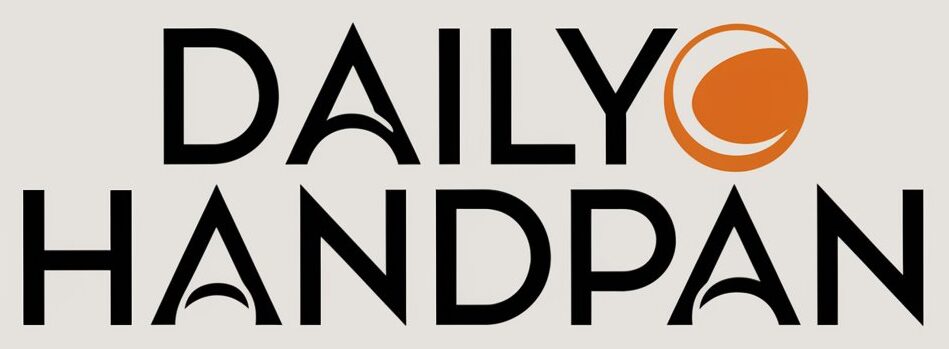The handpan, an instrument known for its ethereal sound and melodic versatility, has captured the hearts of musicians and listeners alike. Combining aspects of percussion and harmony, the handpan offers a unique experience both for the player and the audience. This article delves into the nuances of composing with the handpan, exploring how its unique structure allows for intricate and harmonious musical compositions.
The Unique Structure of the Handpan
The handpan, often referred to as the “hang drum,” is a steel instrument fashioned into a convex shape. It consists of a central note surrounded by a circle of tone fields that resonate with each strike. The instrument is designed to be played with the hands, without the use of mallets or other tools. This close interaction between the musician and the instrument creates a deeply personal and tactile playing experience.
One of the most remarkable features of the handpan is its tuning. Each handpan is tuned to a specific scale, providing a predefined set of notes that work harmoniously together. This allows musicians to focus on rhythm and expression without worrying about playing “wrong” notes, as all the tones are inherently compatible.
From Rhythm to Melody
Composing with the handpan begins with understanding its rhythmic capabilities. Because the instrument is played with the hands, it enables a wide range of percussive sounds, from gentle taps to firm strikes. The central note, known as the “ding,” often serves as the rhythmic anchor, while the surrounding tone fields add melodic elements.
To create a cohesive composition, musicians often start by establishing a rhythm using the ding. This can be a simple repetitive pattern or a more complex sequence, depending on the desired mood of the piece. By layering different rhythmic patterns, musicians can build a dynamic foundation over which melodies can evolve.
Building Harmonies
Once a rhythmic foundation is established, the handpan’s tonal qualities come into play. Each tone field corresponds to a specific note in the scale, allowing for easy pairing of compatible notes to form chords. This makes constructing harmonies intuitive, as the circular layout of the tone fields encourages natural transitions between notes.
To build harmonies, musicians often use a technique called “chordal drumming.” This involves striking multiple tone fields simultaneously or in quick succession to create chords. This method can be used to emphasize the harmonic structure of a piece, adding depth and complexity to the composition.
Exploring Dynamics and Emotion
One of the most captivating aspects of handpan music is its ability to convey a wide range of emotions. By varying the intensity and speed of their strikes, musicians can infuse their compositions with different dynamics, from delicate and serene passages to powerful and energetic sequences.
Dynamics are not only achieved through the force of the strikes but also through the use of hand techniques. For example, the musician can utilize finger rolls, slaps, and muted strikes to produce a variety of textures and nuances. These techniques, combined with the instrument’s natural resonance, create an expressive sound palette that can evoke a spectrum of emotions.
Connecting with the Audience
Beyond technical proficiency, a successful composition on the handpan connects with the audience on an emotional level. The meditative and soothing sounds of the instrument have a unique way of resonating with listeners, creating an immersive auditory experience.
Musicians can deepen this connection by considering the flow and narrative of their composition. By crafting a journey through their music, they can guide the audience through a series of emotions and experiences. This can be achieved through changes in tempo, dynamics, and harmonic progressions, creating a captivating and memorable performance.
Experimentation and Innovation
While the handpan has a relatively fixed set of notes, creativity is not limited. Musicians are constantly exploring new playing techniques and compositional methods to push the boundaries of what the instrument can achieve. This spirit of experimentation has led to the development of hybrid styles, incorporating elements from other musical genres and traditions.
Some composers integrate electronic effects and looping technologies to expand the sonic possibilities of the handpan. By layering multiple tracks or adding ambient effects, they can create lush soundscapes and intricate arrangements that transcend the limitations of the acoustic instrument.
The Therapeutic Power of Handpan Music
Beyond its musical applications, the handpan is often used for therapeutic purposes. Its calming and meditative tones are well-suited for relaxation and mental well-being. Musicians and therapists alike harness the instrument’s soothing vibrations to aid in stress relief, meditation, and even physical healing.
Handpan music can create an environment of tranquility, making it an ideal tool for mindfulness practices. Its rhythmic consistency and harmonic richness can help listeners achieve a state of deep relaxation and mental clarity. As such, it’s not uncommon to find handpan music used in yoga studios, spas, and holistic healing centers.
Conclusion
Composing with the handpan is a deeply rewarding experience that combines rhythm, harmony, and emotion. Its unique structure and tonal qualities provide a vast landscape for musical exploration, allowing musicians to create compositions that are both intricate and emotionally resonant. Whether for personal enjoyment, performance, or therapeutic use, the handpan offers a distinctive and enriching musical journey.
Frequently Asked Questions
A: Unlike many percussion instruments, the handpan incorporates melodic elements, allowing musicians to play both rhythms and harmonies. Its unique design and tuning set it apart, making it not only a percussive instrument but also a melodic one.
A: Yes, beginners can quickly start playing the handpan due to its intuitive layout and harmonious tuning. While mastering advanced techniques takes time, the initial learning curve is relatively gentle.
A: The handpan is versatile and can be used in various musical genres, from world music and ambient to contemporary and electronic. Its ethereal sound makes it suitable for a wide range of musical expressions.
A: Players create dynamics by varying the intensity and speed of their strikes, using different hand techniques, and incorporating rhythmic and melodic variations. This allows for a wide range of expressive possibilities.
A: Yes, the handpan’s soothing tones are often used for meditation, stress relief, and other therapeutic practices. Its calming vibrations make it an excellent tool for creating a tranquil environment.





